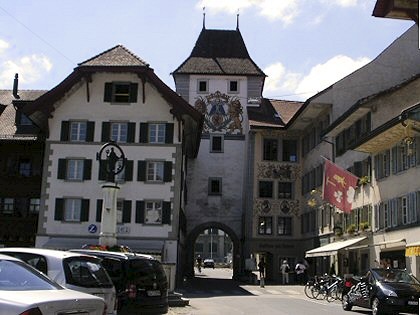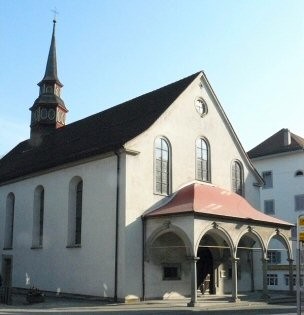The noble Haselburg family founded the fortified town of Willisau in the 14th century. They had received the area from the Habsburgs, who had to pawn it for financial reasons.
The Hasenburg on the slope of the Wellberg (north-east of the open-air bath) served as the administrative seat.
The Willisau branch of the barons of Hasenburg died out in the male line in the middle of the 14th century. As a result, the town and lordship of Willisau were purchased with all rights to the city-state of Lucerne. From 1690 to 1695, Lucerne built a stately residence for the bailiff in the form of the Landvogteischloss (Bailiff's castle).

The town presents itself today as it was rebuilt after the last town fire in 1704.
The Lower Gate was mentioned in 1347 as the "lower" gate. The gate, which was rebuilt for the second time after the town fire of 1704, was demolished in 1854 due to dilapidation. It was not until 1980 that it was rebuilt according to old models - albeit with an enlarged passageway.

City gate seen from the inside.

The oldest houses are in the western part and on the Müligass. They were spared from the last town fire.

The Upper Gate bears the date 1547 on the town side and survived the last town fire in 1704.


The Kutzenturm (tower of the bailiff's castle) is still preserved from the fortifications. It was built at the end of the 14th/beginning of the 15th century and stood in the ring wall as a fortification tower open towards the city. The ring wall originally led from the eastern and western rows of houses - their backs also formed the town wall - up to the castle hill, ran across the entire plateau and joined together there. The only larger remnant of the free-standing ring wall remains on the west side of the hillside.

The Holy Blood Chapel:
There is a legend from 1392 about three gamblers, the first of whom, after losing all his money, cursed and thrust his sword into the air to pierce the body of Christ, whereupon five drops of blood fell on the table, but the blasphemer was taken by the devil; the other two suffered a terrible death.
The drops cut out by the local priest are still kept in the Holy Blood monstrance today. Every year, on the second Sunday after Pentecost, an expiatory procession - the Willisau Day of Indulgence - takes place. Around 100 years after the sacrilege, the wooden chapel was replaced by a Gothic building. The present chapel dates from 1674, and the three wooden early Baroque altars were built a few years later. Eight oil paintings depicting the legend of the Holy Blood adorn the chapel walls. The painted wooden ceiling was installed in 1854. Anton Amberg from Dagmersellen painted the 70 pictures. They depict biblical scenes, the apostles and the minor patrons of the chapel.